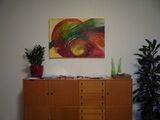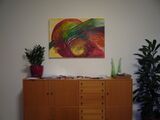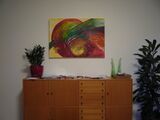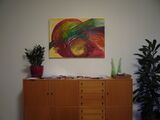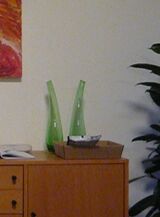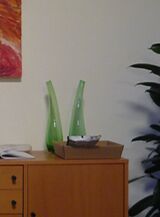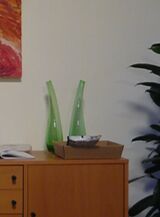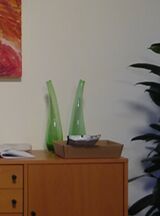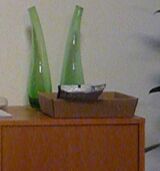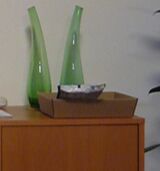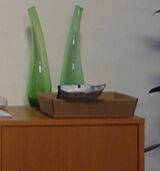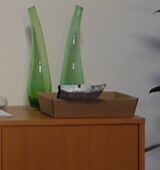Noise reduction with enfuse
Noise Reduction with Enfuse using image stacks.
It is a well known fact that digital camera's have increasing noise levels using high(er) ISO values in low light conditions.
Most modern camera's nowadays have builtin noise reduction systems to overcome this noise. These builtin systems mostly come in 2-3 steps ranging from light correction (leaving more noise, but preserving sharpness in the photo) to aggressive noise reduction (removing most of the noise at the cost of sharpness, thereby creating more blurred photos).
Noise is random. It is therefore also randomly distributed in your photo. Making image stacks and merging them into one image will reduce these random patterns. The better imaging software contain filters to allow you to merge image stacks by layering them and working with opacity (or other options).
Enfuse is much simpler. Just feed a stack of images into Enfuse and it will merge them fine, thereby removing the random pixels that give the noise in your images.
A method I often use, is by using the "(high) speed burst" mode on my camera. The "(high) speed burst" mode is normally meant for fast changing scenes, e.g. sports, to capture the right moment. It's also a great mode to swiftly capture a stack of images.
For this example I just positioned the tripod, set my camera to "(high) speed burst" mode, pressed the release button for approx. 3 seconds and had 24 images: easy as that. (Never mind the composition, it's only an example)
(Off course: In low light conditions your high speed burst mode might end up in a reduced speed burst mode due to longer shutter speeds. Still you can capture quite some images in short time). In the table below you will find the: single exposure, 6 merged exposures, 12 merged exposures and 24 merged exposures.
| Normal images |
Single Exposure |
6 merged exposures |
12 merged exposures |
24 merged exposures |
| Cropped images |
Single Exposure |
6 merged exposures |
12 merged exposures |
24 merged exposures |
| Cropped images 200% |
Single Exposure |
6 merged exposures |
12 merged exposures |
24 merged exposures |
Note: you might need to click the image in the opened window in Firefox or Safari to get the full-size image. In IE Explorer you might need to click the bottom-right corner of the image
If you examine the "single exposure" image you will see severe noise in the whitish wall, the green vases, the cardboard box and in the beech wood dresser. From the above examples you can see the noise is strongly reduced in the "6 merged exposures" and almost no longer existent in the "12 merged exposure" version. The "24 merged exposure" is even better.
Quality is always relative. Decide for yourself how far you want to go.
Expert options for sharpening and improving.
When combining many images you might loose some sharpness in your resulting image. It will still be much better than you will be able to achieve with the builtin camera noise reduction systems (apart from very expensive professional camera's maybe?). You can either apply an "unsharp mask" in an external program like Gimp [1]. Or you can do it in enfuse via the Expert options. The EdgeScale functionality works like an Unsharp mask [2].
As the Edgescale functionality is basically a contrast weighting function, you need to set Contrast > 0 for it to work. Next to that, you also need to set the Mincurvature > 0 as Edgescale will be ineffective without it.
Note that using Expert options is moving you in the "fine tuning" area. It is hard to give examples as it so strongly depends on your images: contrast, soft/hard edges and so on. Next to that comes the personal taste: some like their images a bit softer, others like them to be as sharp and crisp as possible.
Note also that working on the contrast and edges might even increase the noise in your image again.
Exposure fusion and noise reduction.
The exposure fusion and noise reduction can be combined if neccessary. Say you want to photograph a city skyline at night, or a nice building at night enlighted with spotlights. This is a perfect situation for enfuse. You take for example images at -3, -1.5, 0, 1.5 and 3 EV and get a nicely fused image. It might still contain quite some noise. Shoot e.g. 4+ (the more, the better) images at -3, at -1.5, at 0, at 1.5 and at 3 EV and feed this 20+ images into ImageFuser. The result will be a nicely fused image with hardly any noise.
Some last notes and remarks.
- "Does this work if I copy an image 12 times (or so) and use the above mentioned technique?" NO, it does not. Remember that noise is a random pattern. If you copy the same image a number of times, the noise will always be in the same pixels, so it no longer is a random pattern.
- Switch off your camera's noise reduction system or set it to a low setting. When using image stacks you want your input images as sharp as possible.
- Use a tripod and if possible a remote shutter controler. Align your images with align_image_stack before enfusing them. Your images will improve, especially in sharpness.
- You might also want to take a look at the "image stacking" article on the panotools wiki. ImageFuser with enfuse is also an excellent combination for that purpose.
Other Links.
Noise Removal
RoiseRemove a helper program
Enfuse Guis
Enfuse reference manual
